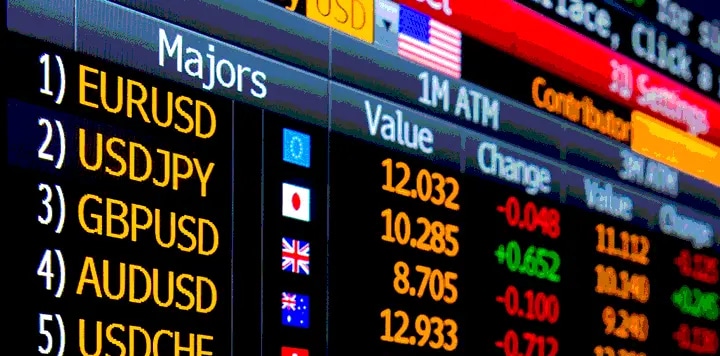
Victor Bhoroma THE Monetary Policy Committee (MPC) of the central bank made a press statement on April 1 to address the depreciation of the local currency and manage the rate of inflation in the economy.
The announcements focus on managing speculative borrowing, encouraging savings, and testing if banks can be efficient match-makers in the overregulated formal system.
Annual inflation for March 2022 advanced to 73%, up from 66% in February and 61% as of the beginning of the year. In March, month-on-month inflation retreated from 7% to 6,3%.
However, the figure was way out of line with government target of reducing month-on-month inflation to less than 4% in March 2022. The central bank and the government set a 25-35% annual inflation target for end of 2022.
This too is already a mission impossible with annual inflation expected to creep back to triple digit figures and end the year just below 120%.
Parallel market premium The parallel market rate has advanced to US$1:ZW$300 in Harare with most traders and retailers forward quoting Zimbabwean dollar prices at US$1:ZW$320.
This is a strategy to discourage customers from using local currency and pay in hard currency. Selected informal traders are also demanding US dollar for several fast-moving consumer goods made locally, sending a strong signal on the impending death of the domestic currency.
The pegged auction platform rate for April 5, 2022 was at US$1: ZW$146, giving a parallel market premium of 106%. The premium is now a tax on exporters who must liquidate 40% of their export proceeds, to which over 20% is lost due to exchange rate disparities between actual market prices and the central bank manipulated rate.
- Chamisa under fire over US$120K donation
- Mavhunga puts DeMbare into Chibuku quarterfinals
- Pension funds bet on Cabora Bassa oilfields
- Councils defy govt fire tender directive
Keep Reading
Similarly, local foreign currency depositors lose more than 10% of their hard currency on conversion of 20% in Foreign Currency Accounts (FCA) deposits to the local currency.
The major causes for the advances in the parallel market rate are growth in domestic money supply, increase in demand for foreign currency due to border opening (cross border foreign currency demand) and payments by government to infrastructure contractors in local currency, which push up demand for foreign currency.
Positive interest rates The central bank increased interest rates from 60% to 80% per annum in a move aimed at discouraging speculative borrowing in the market. The 80% will likely cushion lenders for a brief period as annual inflation for May is likely to be above 81%.
As of December 31, 2021, foreign currency denominated loans constituted 37% of total banking sector loans, an increase from 30% reported as of June 30, 2021.
Local currency loans increased from 46% recorded in June 2021 to 48% as of December 31, 2021. Bulk of the loans (76% of total loans) went to the productive sectors of the economy.
As such, positive interest rates are expected to keep this momentum of productive borrowing and lending in the economy.
Bank accommodation rates The central bank increased the Medium-Term Bank Accommodation Facility interest rate from 40% to 50%. The accommodation facility is the mechanism used by commercial banks to borrow money from the central bank for onward lending.
The 10-percentage point increase means that the cost of borrowing money for banks has gone up and it will discourage borrowing. Ordinarily, this would curb commercial bank’s ability to create money.
However, local banks seldom borrow from the central bank as they are adequately funded through non-interest income.
Encouraging savings The apex bank increased minimum deposit rates for the beleaguered domestic currency for savings and time deposits to 20% and 25% respectively.
The 50% increases are meant to encourage savings and reduce pressure on limited foreign currency. However, with annual inflation over 73% the move will be largely ignored by individual and institutional depositors.
The local currency is a transitory currency which economic agents dispose of in the shortest time possible to limit inflation induced losses. The current levels of broad money supply growth, inflation rates and policy uncertainty do not provide any incentive to save in local currency.
This is further heightened by the election period the country has entered in (harmonised elections are penciled on or before August 2023), where there is a tendency by the government to institute knee jack policies to appease the electorate and prioritise short term political goals. These tend to push up money supply growth and erase confidence in the economy.
Money supply targets Quarterly reserve money targets have been reduced from 7,5% to 5% for the quarter ending June 2022. The move will have no impact to the depreciation of the local currency, parallel market rates or inflation outturn as money supply is still growing out of line with economic growth.
Broad money supply is more telling on the negative impact to the local economy, with an annual growth of over 161% in 2021 alone. The central bank is still engaged in unsustainable quasi fiscal operations that consistently weaken the local currency and render reserve money figures irrelevant to inflation movements.
Capped foreign exchange trades
In a somewhat positive signal of what may come in the future and in response to pressure from key stakeholders, the apex bank partially liberalised the foreign exchange system to allow for holders of foreign currency to sell up to US$1 000 to local banks on a willing-buyer willing-seller basis.
This means that banks can peg their own foreign exchange rate in those small trades. The move shows that the central bank is very much reluctant to free market price discovery and is begrudgingly moving its feet to address a problem, which is now a living menace in the economy.
Ideally the central bank could have used a US$20 000 cap for individuals and US$100 000 for business account holders to attract more foreign currency to the formal banking sector.
However, the cap points to targeting individuals and the informal market that frequent the parallel market to sell small amounts. It is still unclear whether the central bank will average rates from all the banks and release the data considering that its pegged rate will be way below the commercial bank rates.
Provided commercial banks do not collude to set bid rates, the move can provide important information to the central bank and create a path towards a market driven foreign exchange market likely to come after the 2023 elections.
Inefficient auction system The central bank remains the only supplier of foreign currency on the auction allocation platform. The apex bank has allocated over US$2,950 billion from June 23, 2020 to date. This year, more than US$370 million has been allocated for the importation of various commodities and payment of offshore services (US$1,971 billion was allocated in 2021).
In 2021, Zimbabwe made formal foreign currency payments amounting to US$7 billion (Up from US$4,8 billion in 2020) before informal cross border payments are factored in.
This means that the country now requires at least US$650 million per month (formally) to make foreign currency payments for imports and other service payments.
The current foreign currency allocation system is not an auction market as it does not follow the basic principles of a Dutch auction market. The amounts to be auctioned are not communicated before the auction, settlement is not done within two days, allotments to winning bidders are only done partially and selected bidders jump the settlement queue ahead of earlier winners.
The central bank has signaled that it might invoke the Bank Use Promotion Act on commercial importers, who are bypassing formal banking channels in paying for their supplies abroad.
It remains to be seen whether full liberalisation of the exchange market will be done any time soon and if the central bank will give full autonomy to commercial banks to freely peg own bid rates without backdoor warnings.
The bank could have been pushed to test an idea and possible market response, but there is no doubt that for the second time the auction system has flopped.
The central bank is very much conflicted on foreign exchange management because on one hand it needs cheap foreign currency from exporters and wants to continue its quasi-fiscal operations, while on the other hand it needs to manage the rate of inflation by hook or by crook through manipulating the exchange rate.
The pronouncements by the central bank will curb speculative borrowing in the market and allow the central bank to slowly test recommendations from various stakeholders on allowing banks to be market makers.
However, the buck stops on its doors on managing inflation and providing stability to the local currency through a strict money supply regime.
After fiddling with all policies, reinventing failed ones, and passing a plethora of legislation, it must be said that the most sustainable way to manage foreign currency in the Zimbabwean economy is through a managed floating exchange rate.
The wheel can never be reinvented on what is working perfectly in other African markets or developing nations.
- Bhoroma is an economic analyst. He holds an MBA from the University of Zimbabwe (UZ). — [email protected] or Twitter @VictorBhoroma1.











